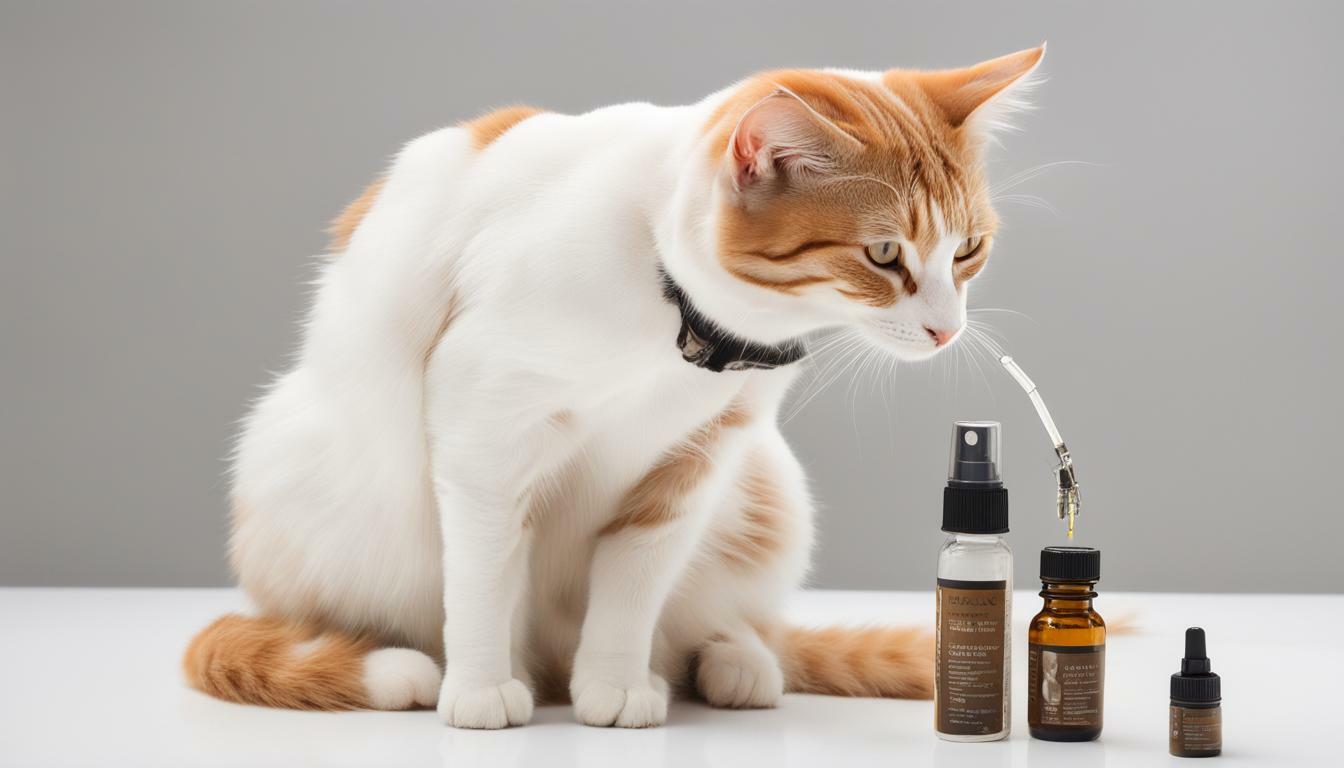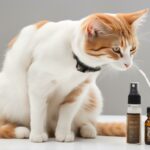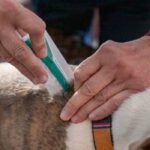
As a cat owner, one of your responsibilities is to ensure your pet remains healthy and comfortable. Part of achieving this goal involves protecting your cat from flea infestations, which can cause discomfort, skin irritation, and disease. It is essential to use flea treatment on your cat regularly to prevent these nuisances from occurring.
However, applying flea treatment on your cat can seem daunting, particularly if you’ve never done it before. With the right guidance and preparation, though, you can effectively use flea treatment on your cat without any issues. In this section, I’ll be sharing some crucial tips on how to use flea treatment on your cat.
Key Takeaways:
- Flea treatment is essential for cat grooming and overall health.
- Flea treatment can prevent skin irritation and disease.
- Applying flea treatment can be easy with the right guidance and preparation.
Understanding Cat Flea Treatment Options
When it comes to cat flea treatment, there are several options available in the market. Each method has its own advantages and disadvantages, and choosing the right one for your cat depends on several factors.
Topical Flea Treatment
Topical flea treatment is a popular option for cat owners. This type of treatment comes in the form of a spot-on liquid that is applied to the cat’s skin between the shoulder blades. The liquid then spreads across the cat’s skin, providing protection against fleas for several weeks. Topical flea treatments are effective and easy to use, but it is important to ensure that the cat’s skin is dry before applying the treatment. Additionally, some cats may have an adverse reaction to the treatment, so it is best to consult with a veterinarian before using it.
Oral Flea Treatment
Oral flea treatment involves giving your cat a pill that contains medication to kill fleas. This type of treatment is often used for cats that are difficult to apply topical treatments to. However, administering pills to cats can be a challenge, and some cats may refuse to take the medication. Oral flea treatments are also not recommended for cats with liver or kidney problems, so it is important to consult with a veterinarian before using this method.
Flea Collar
A flea collar is a collar that is worn around a cat’s neck. The collar releases a pesticide that kills fleas and ticks. Flea collars are easy to use and provide continuous protection against fleas, but they may not be effective for cats with long hair or thick fur. Additionally, some cats may have an allergic reaction to the collar, so it is important to monitor your cat for any signs of discomfort or irritation.
Flea Shampoo
Flea shampoo is a type of cat shampoo that is formulated to kill fleas and ticks. This type of treatment is often used in conjunction with other flea treatments. However, flea shampoo is not as effective as other treatment methods, and it may not provide long-term protection against fleas. Additionally, frequent use of flea shampoo can dry out a cat’s skin, so it is important to use it sparingly.
Natural Flea Treatment
Natural flea treatment involves using natural ingredients, such as essential oils, to repel fleas and ticks. This type of treatment is often preferred by cat owners who are concerned about using chemicals on their pets. However, natural flea treatments may not be as effective as other methods, and it is important to ensure that the ingredients used are safe for cats. Additionally, some cats may have an allergic reaction to natural ingredients, so it is important to monitor your cat for any signs of discomfort or irritation.
Preparing Your Cat for Flea Treatment
Proper cat grooming is essential before applying any flea treatment. It is best to start by combing your cat’s fur with a flea comb to remove any adult fleas and their eggs. If your cat has a severe flea infestation, a bath may be necessary using a cat-friendly flea shampoo.
Before giving your cat a bath, make sure to brush its fur thoroughly to remove any tangled knots. Fill the tub with warm water, ensuring it is not too hot or cold for your cat. Wet your cat’s fur entirely, avoiding their eyes and ears. Massage the shampoo on your cat’s fur, ensuring even coverage. Rinse your cat with warm water and towel dry them gently.
Once you are done grooming your cat, allow them to rest for a while before applying any flea treatment. This gives your cat a chance to calm down and recover from the grooming process. Also, avoid bathing your cat for a few days after applying the flea treatment to prevent it from being washed away from the skin.
Applying Topical Flea Treatment on Your Cat
Topical flea treatment, also known as spot-on treatment, is a popular and effective option for cat flea control. This type of treatment is applied directly to the cat’s skin and spreads throughout their body to kill fleas and prevent future infestations. Before applying topical flea treatment on your cat, it’s essential to follow these steps:
- Choose the right treatment: There are various types of topical flea treatments available in the market, depending on the brand and the active ingredient. Consult with your veterinarian to choose the most suitable one for your cat.
- Prepare your cat: Gently brush your cat’s hair and ensure their skin is clean and dry. It’s recommended to wait for at least 48 hours after bathing your cat before applying topical flea treatment. If your cat is anxious or nervous, consider using a calming spray or treating them with a tasty snack.
- Apply the treatment: Part the fur at the base of the cat’s neck, exposing a small patch of skin. Squeeze the applicator and spread the treatment on the exposed skin. Avoid applying the treatment on the fur, and never use dog flea treatment on cats.
- Avoid contact: Once you’ve applied the treatment, keep your cat away from other pets and children for at least an hour. Avoid touching the treated area, and wash your hands thoroughly with soap and water.
- Monitor your cat: Keep an eye on your cat’s behavior and check for any signs of irritation or side effects. If you notice anything unusual, contact your veterinarian immediately.
It’s essential to apply topical flea treatment regularly, according to the manufacturer’s instructions, to ensure your cat remains flea-free. Although topical flea treatment is generally safe for cats, always consult with your veterinarian before using any flea control products on your feline friend.
Administering Oral Flea Treatment to Your Cat
Oral flea treatment is an effective way to protect your cat from fleas. These treatments come in the form of pills or chews, and they work by targeting the nervous system of adult fleas, preventing them from reproducing.
Before administering oral flea treatment to your cat, it is essential to consult with your veterinarian. Your vet will recommend the best type of oral flea treatment for your cat’s needs and provide guidance on dosage and administration.
To administer the oral flea treatment, you can hide the pill or chew in your cat’s food, or you can give it to them directly. If you opt for the latter, make sure to follow these steps:
- Hold your cat securely and open their mouth
- Place the pill or chew at the back of their tongue
- Gently close their mouth and stroke their throat to encourage swallowing
If your cat refuses to take the medication, consult with your veterinarian for alternative methods of administration. It is essential to ensure that your cat takes the full course of medication for the most effective flea prevention and management.
While oral flea treatment is generally safe, it is crucial to monitor your cat for any adverse side effects. These may include vomiting, diarrhea, or lethargy. Contact your veterinarian immediately if you notice any unusual behavior or symptoms in your cat.
Overall, oral flea treatment is an effective way to keep your cat flea-free and maintain their overall health. By following proper dosage and administration guidelines and consulting with your veterinarian, you can ensure your cat’s safety and well-being.
Using Flea Collars and Shampoos for Cats
Cat grooming is an essential part of flea control, and flea collars and shampoos are popular options for flea treatment. Flea collars are worn around the cat’s neck and release a small amount of insecticide, preventing fleas from infesting your cat’s fur. Flea shampoos are used during a cat bath, and they work by suffocating and killing fleas and their eggs.
When using flea collars, ensure that you adjust the collar to fit snugly around your cat’s neck without being too tight. This will prevent your cat from getting entangled or injured. Also, ensure that the collar remains dry, as moisture can reduce its effectiveness.
When using flea shampoo, it is crucial to choose a product that is safe for cats and follows the instructions carefully. Before starting the bath, brush your cat’s fur with a flea comb to remove any loose fleas and debris. Wet your cat’s fur thoroughly and apply the flea shampoo, lathering it well and allowing it to sit for several minutes before rinsing thoroughly.
It is important to note that while flea collars and shampoos can be effective, they may not be suitable for all cats. Some cats may be allergic to the chemicals in flea collars, while others may be too sensitive to the strong fragrances of flea shampoos. Additionally, these treatments may not be effective in severe flea infestations, and you may need to consult a vet for more potent remedies.
Conclusion
In conclusion, flea treatment is a crucial aspect of cat grooming and health. By taking the necessary steps to prevent fleas and choosing the right treatment method for your cat, you can ensure a flea-free and healthy feline friend. Regular cat grooming, including flea combing and bathing, can also help prevent flea infestations.
Remember, fleas not only cause discomfort for your cat but can also lead to more serious health issues. Keeping your cat’s environment clean and tidy and regularly checking for fleas can help prevent infestations from occurring. If you do notice fleas on your cat, don’t panic. There are plenty of effective treatments available, including topical and oral solutions, flea collars, and shampoos.
By staying informed and proactive about flea prevention and treatment, you can ensure your cat’s well-being and enjoy many happy, healthy years together.
FAQ
Q: How often should I apply flea treatment to my cat?
A: The frequency of flea treatment application depends on the specific product you are using. Always follow the instructions provided by the manufacturer for the recommended application interval.
Q: Can I use dog flea treatment on my cat?
A: No, it is not safe to use dog flea treatment on cats. Cats and dogs have different physiological reactions to certain chemicals, and some ingredients in dog flea treatments can be toxic to cats. Always choose flea treatment products that are specifically formulated for cats.
Q: Is it necessary to groom my cat before applying flea treatment?
A: Grooming your cat before applying flea treatment can help ensure better product efficacy. By removing any tangles or mats in the fur, the treatment can reach the skin more effectively. Additionally, grooming allows you to check for any signs of flea infestation or skin issues that may require veterinary attention.
Q: Can I bathe my cat after applying flea treatment?
A: It is generally recommended to wait for at least 24 hours after applying flea treatment before bathing your cat. This allows the product to fully absorb into the skin and provide optimal effectiveness. However, always check the instructions provided with the specific flea treatment product, as some may have different guidelines.
Q: Are natural flea treatments effective?
A: Natural flea treatments can provide some level of relief, but their effectiveness may vary. It is important to note that natural treatments may not be as potent or long-lasting as conventional treatments. Consider consulting with your veterinarian to determine the best flea treatment option for your cat’s specific needs.
Q: Can I use multiple flea treatment methods at the same time?
A: It is generally not recommended to use multiple flea treatment methods simultaneously, as this can increase the risk of overexposure to chemicals. If you wish to combine treatments, always consult with your veterinarian to ensure compatibility and safety for your cat.
- Does Flea Treatment Kill Lice? - September 8, 2023
- Does Flea Treatment Kill Mites? - September 8, 2023
- How to Put Flea Treatment on a Dog? - September 8, 2023






